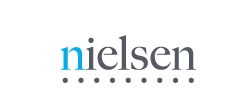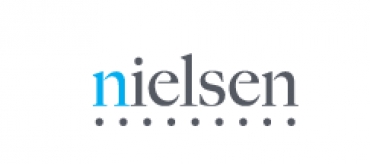
 Discretionary Spends On A High This Quarter
Discretionary Spends On A High This Quarter
Note Of Caution On Savings After Household Expenses Continue
India continues to lead the global confidence index for the quarter at 131 points, the same as last quarter followed by United States (119), Philippines (117) and Indonesia (116).
More than half of respondents (54%) polled that they feel India is still in economic recession, up four points from last quarter (50% in Q2 2015). However, this quarter 67% indicate that India will be out of the recession over the next 12 months, as against 61% last quarter.
The Nielsen Consumer Confidence Index measures perceptions of local job prospects, personal finances and immediate spending intentions among more than 30,000 respondents with Internet access in 60 countries. Consumer confidence levels above and below a baseline of 100 indicate degrees of optimism and pessimism, respectively.
In the latest online survey, fielded between Aug 10 – Sept 4, 2015, over four in five (81%) urban Indian respondents indicated the highest level of optimism globally on job prospects in the next 12 months. This level remains the same as last quarter (81% in Q3 2015).
“This year, the Indian consumer continues to be resilient and hopeful when it comes to economic outlook. What is interesting is that discretionary spending is looking up, even when compared to the same period last year amongst urban respondents. At the same time, there is a cautionary tone as is evident in their savings intent. The festive season may lend to this buoyancy, though smart marketing and attractive deals, both online and in store, may also stimulate the market ” said Roosevelt D’Souza, senior vice president, Nielsen India Region. “Volatility still exists in consumer sentiment owing to deficit monsoons, and uncertainty in certain pockets when it comes to consumption” he added.
DISCRETIONARY SPENDING & SAVINGS
Nearly 2/3rds (66%) online respondents polled indicated this is a good time to buy things they want and need, once again leading the global top ten countries for this parameter in the quarter. These optimism levels are six percentage points higher than the same period last year (59% in Q3 2014).
There is an uptick in intent on utilisation of spare cash, as 70% of online respondents have indicated they will invest in savings this quarter, following by new technology (56%), holidays and vacations (56%) and half of online respondents polled (50%) will spend on new clothes. Nearly two in five respondents (37%) are looking to invest in retirement funds this quarter.
Discretionary spending has seen a fillip from the same quarter last year. In Q3 2014 – 61% indicated they will invest spare cash in savings, 44% in new technology projects, 43% in new clothes, and 42% on holidays and vacations.
Continuing a trend of caution when it comes to spending habits, over 4/5th of respondents (83%) have changed their spending habits to save on expenses, echoing trends from last quarter (80% in Q2 2015), and five percentage points higher than the same quarter last year (78% in Q3 2014).
Compared to last year, the avenues of saving cited are primarily gas and electricity (54%), spending less on new clothes (48%), and cutting down on telephone expenses (37%) by respondents polled online. Over two in ten (23%) respondents indicated they will cut down on smoking to control spending habits, even when conditions improve.
PERSONAL FINANCES, CONCERNS
81% urban Indian respondents have polled that the state of personal finances was good or excellent for the third quarter of 2015, marginally up by two percentage points from last quarter (79% in Q2 2015).
There has been a slight increase on concerns around job security, with 19% of respondents indicating it is the biggest concern, up by two points from last quarter (17% in Q2 2015). However compared to the same period last year, overall the outlook on jobs security is optimistic (21% in Q3 2014).
Other big concerns for the next six months are state of the economy (13%), followed by work life balance (10%) and terrorism (8%). The second biggest concerns for the quarter included terrorism (10%) Increasing food prices (8%) and parents welfare and happiness (7%).
ABOUT THE GLOBAL SURVEY OF CONSUMER CONFIDENCE AND SPENDING INTENTIONS
The Nielsen Global Survey of Consumer Confidence and Spending Intentions was conducted Aug. 10 – Sept. 4, 2015 and polled more than 30,000 online consumers in 60 countries throughout Asia-Pacific, Europe, Latin America, the Middle East/Africa and North America. The sample includes Internet users who agreed to participate in this survey and has quotas based on age and sex for each country. It is weighted to be representative of Internet consumers by country. Because the sample is based on those who agreed to participate, no estimates of theoretical sampling error can be calculated. However, a probability sample of equivalent size would have a margin of error of ±0.6% at the global level. This Nielsen survey is based only on the behavior of respondents with online access. Internet penetration rates vary by country. Nielsen uses a minimum reporting standard of 60% Internet penetration or an online population of 10 million for survey inclusion. The China Consumer Confidence Index is compiled from a separate mixed methodology survey among 3,500 respondents in China. The sub-Saharan African countries in this study are compiled from a separate mobile methodology survey among 1,600 respondents in Ghana, Kenya and Nigeria. The Nielsen Global Survey, which includes the Global Consumer Confidence Index, was established in 2005.
